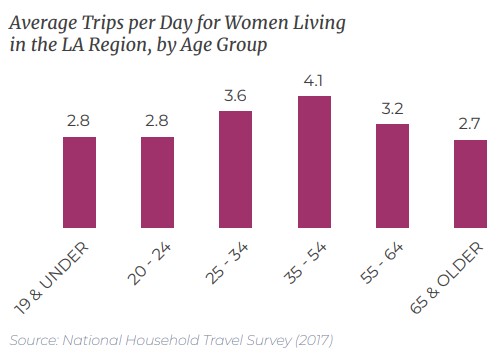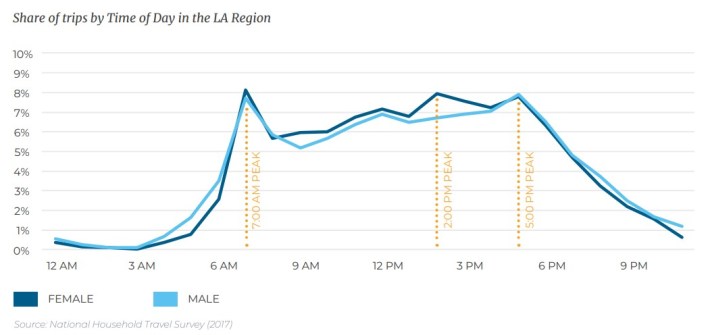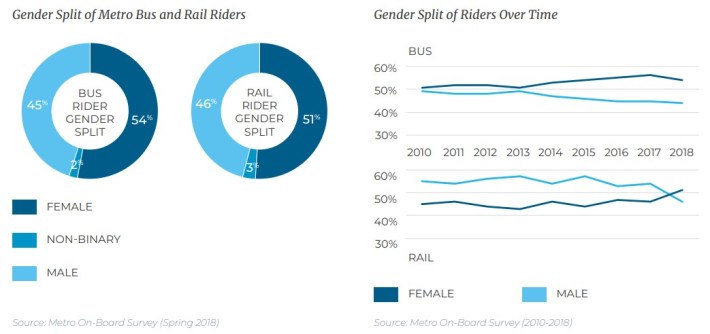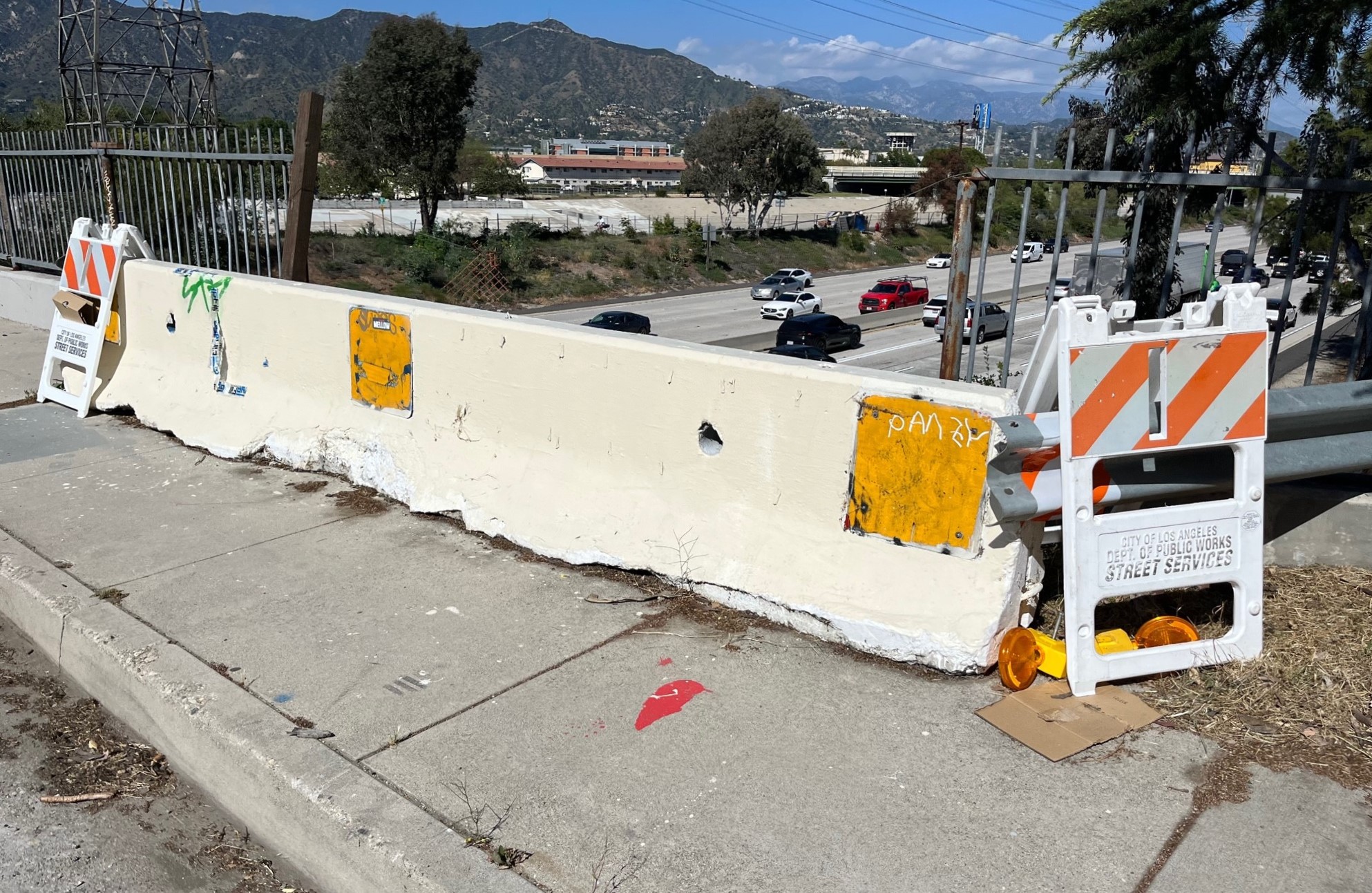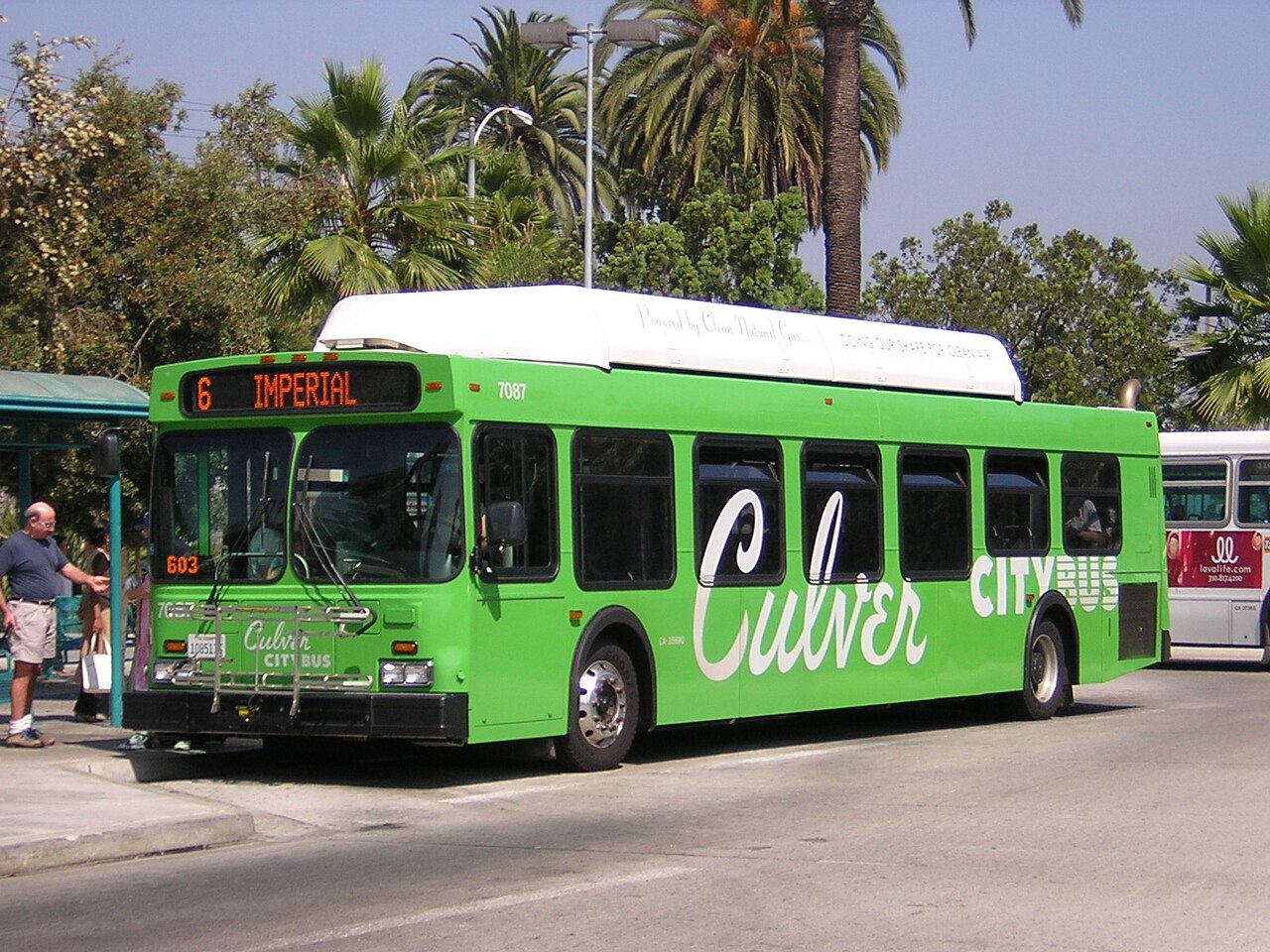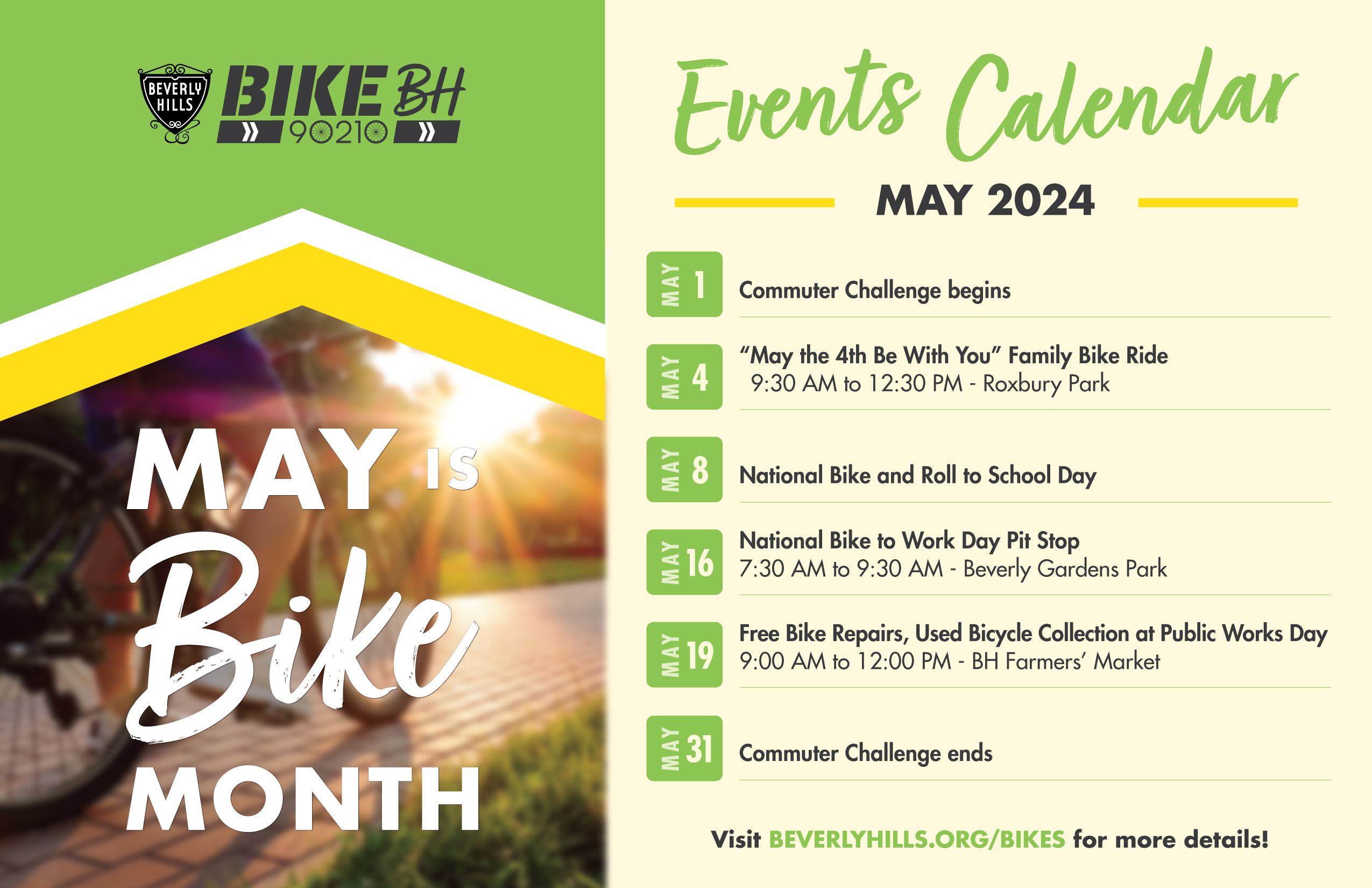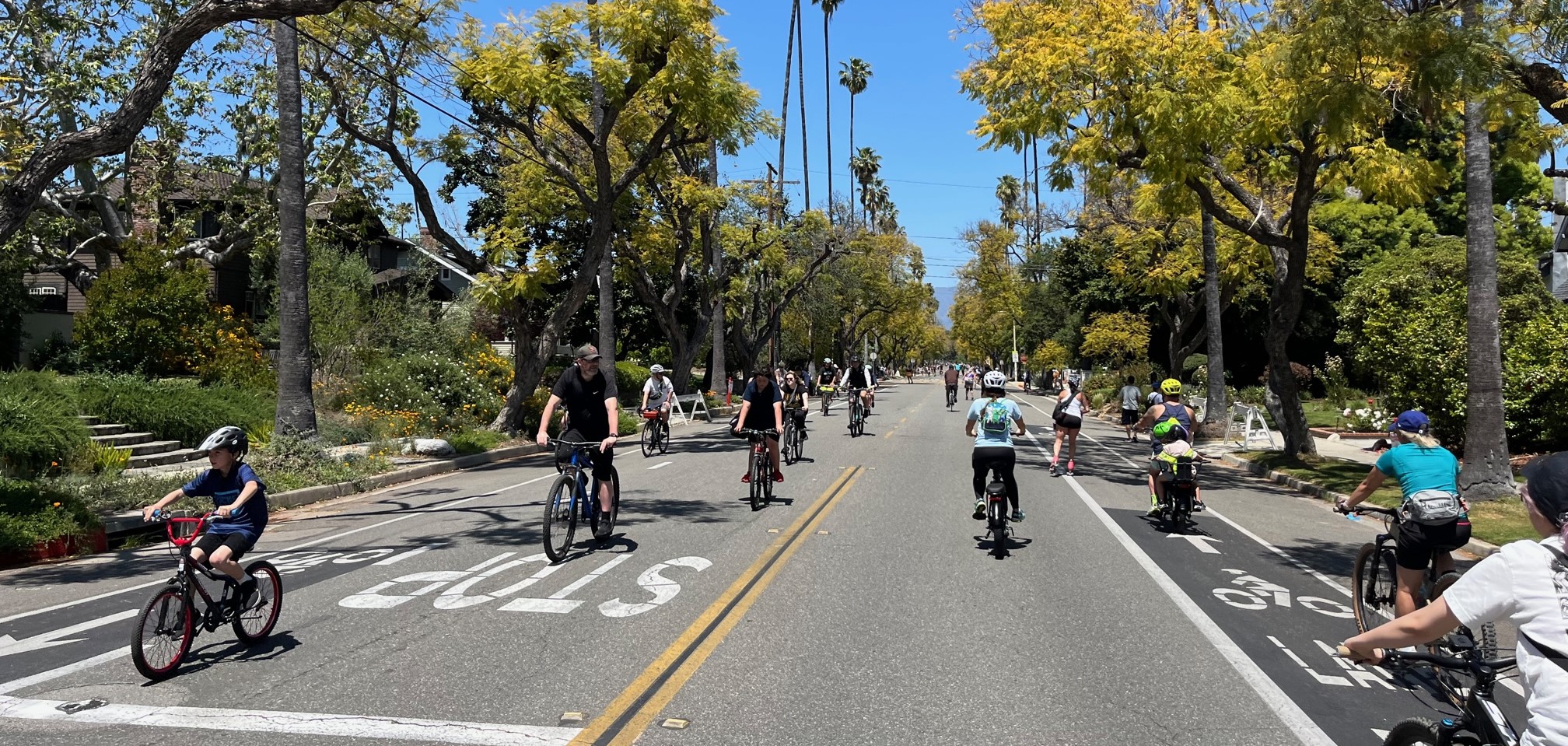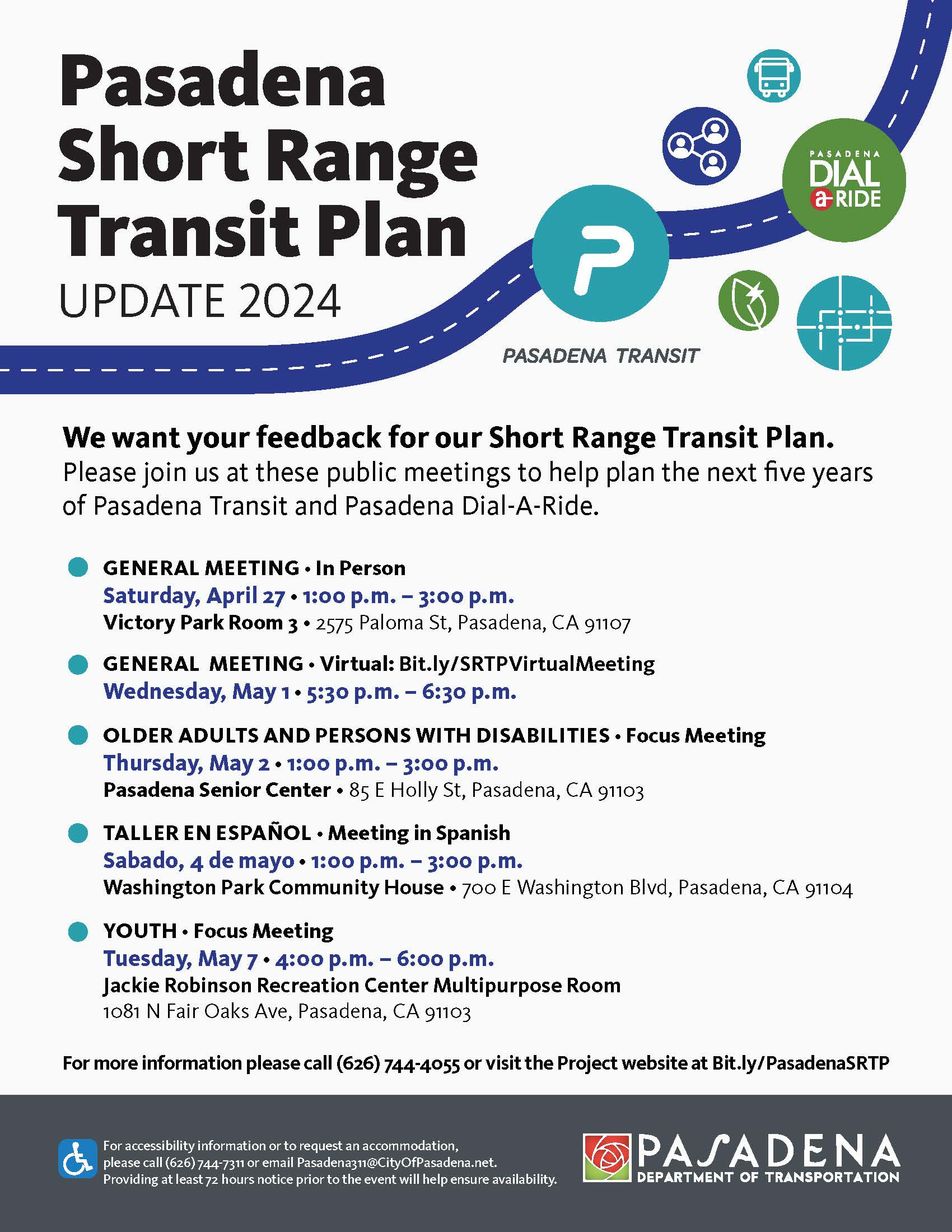New Metro Report: Understanding How Women Travel
3:21 PM PDT on September 27, 2019
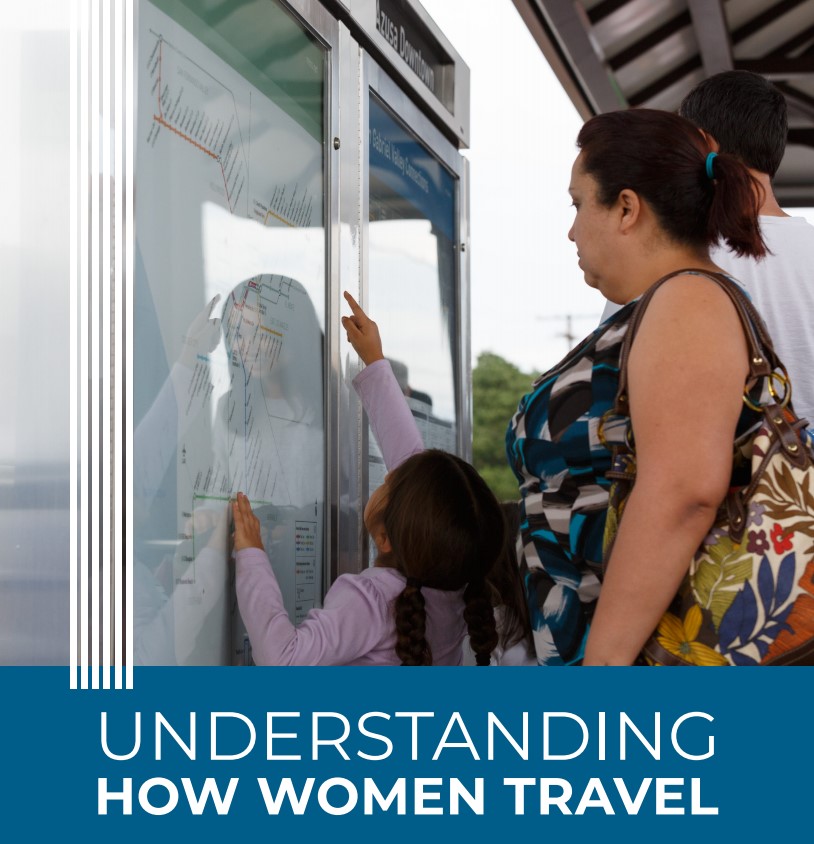
All images from Metro’s Understanding How Women Travel report
Metro recently released a report on challenges faced by its women riders, Understanding How Women Travel. It runs to 169 pages, with an executive summary alone of 17 pages. There is also a 7-page staff report. Metro's The Source has a deep dive on the report's findings, including plenty of charts and facts. The report lays the groundwork for Metro efforts to improve women riders' experience.
The report grew out of Metro's Women and Girls Governing Council, which has already initiated changes to some hiring practices to make it easier for women seeking Metro jobs.
Metro gathered data from existing studies and data (including the National Household Travel Survey and Metro surveys), field observations, participatory workshops, focus groups, and pop-up events.
The report findings are broken down into five broad categories.
1. Travel Behavior Trends
Historically, transit agencies have focused on traditional commuting, which peaks twice daily during rush hours. This tends to capture men's transportation patterns, but not women's. Metro found that women take more trips per day than men, and those trips are shorter and go to a broader spread of destinations. In L.A. women are more likely than men to travel mid-day, with a travel peak around 2 p.m. - when off-peak transit service operates less frequently.
Metro found that more than half of all bus riders (54%) are women, and more than half (51%) of Metro rail riders are women.
These findings show that women experience more exposure to travel burdens such as costs, stress, and safety risks.
2. Safety
The report says that for women, "safety on transit is a top concern voiced across every mode of data collection, and their concerns center around harassment and personal security, as well as physical safety and design of vehicles, stations, and stops." The report found that 60 percent of female riders reporting feeling safe riding Metro by day, a portion that falls sharply to 20 percent at night. Safety concerns "are causing riders to alter their behavior – to consider their clothing choices, to change their routes or take routes that may be longer or more costly, to avoid taking a trip at all, or for those who have other options, simply not ride transit because they prefer the safety of a car."
Women surveyed said that lighting and better security/police staffing would make them feel safer; they also expressed a preference for more staff over technological solutions like security cameras.
3. Access
This category includes women's concerns about the physical design of transit spaces, their financial ability to pay for transit trips for themselves and those in their care, the challenges of traveling with children, and the travel needs of women with disabilities.
Women who ride Metro live in poverty at greater rates than male riders. Metro found that 59 percent of its female bus riders live below the poverty line, compared to half of male bus riders. For rail, 34 percent of female rail riders are below the poverty line, compared to 26 percent of male riders. Median household income for female Metro bus riders is $16,623; for males it is $19,549. Among rail riders, median household income for females is $31,400, and for males $42,291.
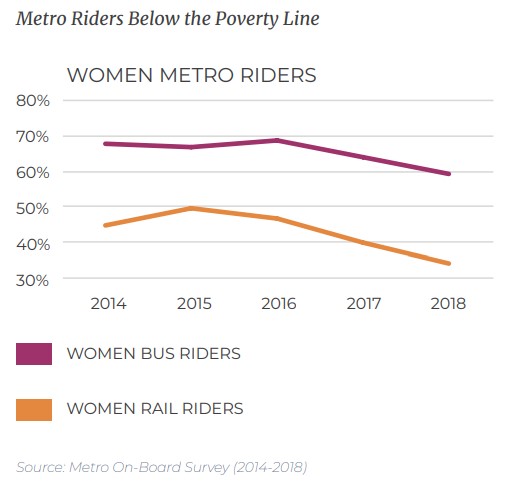
Low-income women reported that although they knew a monthly or weekly pass would save money, the up-front cost of a pass is too high. Further quoting the report:
- Women seem to prefer cash for its flexibility, as TAP cards are attached to only one individual and cannot be used to pay for children that may be accompanying an adult rider.
- Women bus riders reported that TAP cards are difficult to obtain and reload.
- Women traveling with children reported that kids’ fares are confusing to understand.
4. Reliability
Metro reports that the "top three complaints filed by female Metro bus riders are all related to reliability." In discussions, Metro heard "time and time again stories of women stuck waiting for a late bus, of being passed up and waiting an hour for the next bus, and of unreliable real-time information on station signs and cell phone apps."
The report outlines the consequences of reliability issues, which exacerbate safety concerns and can result in daycare fines, missed appointments, and limiting access to employment opportunities. Further, says the report, "These challenges become even more difficult when traveling with children or trip-chaining, or for women with jobs or household responsibilities that require travel during mid-day, late night, or early morning periods, or on the weekends."
5. Convenience and Comfort
Metro reports that women recognized and embraced the convenience of riding Metro compared to the stresses of driving. Nonetheless, the report recounts ways that Metro's bus transit system is in many ways not designed or equipped for women's travel, including "lack of space for carts, strollers, and bags on buses, lack of shade at stops, dirty stops and stations, and push buttons and pull-cords located too high."
Upcoming Gender Action Plan Solutions
The Understanding How Women Travel report will inform Metro's upcoming Gender Action Plan. Similar plans have been adopted in London and Vienna. At yesterday's board meeting, Metro staff mentioned several possible solutions anticipated to be included in the plan:
- adding a "Request Stop" program - at night, allowing bus drivers to let women disembark between stops for shorter walks
- adding round-trip transfers
- fare capping (this allows riders to pay the cost of daily/weekly/monthly passes incrementally)
- better elevator design in future stations
- adding elevator attendants - as has been done in other transit systems
Additional solutions listed in the report include:
- Outreach to increase usage of the LIFE (Low-Income Fare is Easy) program
- Fare policies that make it easy for families to ride together, to encourage more families to use the Metro system - including clarifying the fare policy to address kids between five and seven years old
- Easier access to TAP reloading and pass purchasing options
- Bus stop and station features, including shade, benches and trash cans, along with regular cleaning
- Engage a vehicle design consultant to provide guidance on bus and rail vehicle interior design changes, such as providing room for strollers and other items women carry, increasing the number of railings and poles that are within reach, and allowing for more reserved seating and seating options for families
- Policy changes to make it easier to bring strollers on board
- Joint Development and Transit-Oriented Communities policies to provide for needed uses - childcare centers, medical offices, and grocery stores - at transit stations
- Improve Access Services, such as taking advantage of new technologies to improve the efficiency of routing, matching shared rides, and providing flexibility for booking on-demand rides
Streetsblog will cover the upcoming Gender Action Plan. To our female readers - what are your biggest concerns about riding transit in Southern California? How could Metro better serve its female riders?
Read More:
Stay in touch
Sign up for our free newsletter
More from Streetsblog Los Angeles
Freeway Drivers Keep Slamming into Bridge Railing in Griffith Park
Drivers keep smashing the Riverside Drive Bridge railing - plus a few other Griffith Park bike/walk updates
This Week In Livable Streets
Bike Month, Hyperion street safety, Eastside rail plans, Pasadena transit, CicloIRVINE, Culver City bus service, and more
Active Streets Mission-to-Mission – Open Thread
Tens of thousands of participants biked, walked, skated and scootered on car-free streets through San Gabriel, South Pasadena and Alhambra
